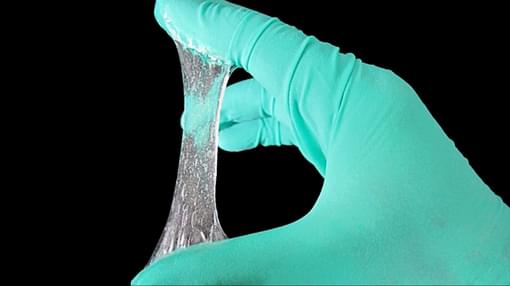An optimized sticky patch for treating heart attack patients
Categories: Materials Chemical and healthcare

Heart attacks (myocardial infarctions) are the leading cause of death worldwide. They result in more than 2.4 million deaths per year in the US, more than 4 million deaths in Europe and North Asia, and one-third of total deaths in developing countries. Heart attacks can be difficult to treat – effective surgical care for heart attacks requires transdisciplinary collaboration – but there are, nonetheless, treatments available. One such treatment is to apply a cardiac patch, a structure that replaces or assists damaged tissue before the entire organ is affected. A new viscoelastic patch, recently developed through collaborative efforts between clinicians and engineers, demonstrates promising results for future cardiac therapies.
What is a heart patch, and are current heart patches good enough?
A heart attack is a serious medical emergency where blood supply to the heart’s own tissue is suddenly blocked; this can result in damage to the muscle in the blocked area and reduce the heart’s ability to pump blood. After a heart attack, cardiac muscle – much like a broken bone that the doctor tells you to keep still – will suffer further damage if it’s subsequently overused. The problem here is that the heart needs to keep pumping. We can’t let it stop for weeks at a time, but we can reduce its burden.
We can apply a cardiac patch directly to the surface of the damaged cardiac muscle by either suturing or glueing. The patch then provides mechanical support for the heart. It alleviates the dilation of the left ventricle (the heart's pumping chamber), and it improves heart function to prevent a cycle of further heart failure. Because of this, the mechanical properties of the patch are critically important to maximize its therapeutic efficacy and minimize side-effects. Even slight mechanical discrepancies between the patch and the heart muscle can accelerate heart failure. If it’s too stiff the heart can't expand properly, but if it’s too soft then it won’t provide enough support.
Previously, patches had highly varied mechanical properties and, therefore, widely scattered therapeutic efficacy. This was primarily because the mechanisms involved in limiting dilation while restoring function were completely unknown, until now. Our computational simulations elucidated some of this uncertainty, providing us with a more rational design for the acellular heart patch.
How to design a better heat patch?
To design a better patch, we need to consider two key factors: stiffness and pre-stretch. In the ideal scenario, the patch will provide enough mechanical support against heart dilation to help it heal without restricting the heart’s normal pumping. After running numerical simulations, we found that a patch with higher stiffness and pre-stretch will more effectively restrain the dilatation, but at a certain point will begin to impair the heart’s pumping functionality if these parameters are too high. Hence, we need to fine-tune both the pre-stretch and the stiffness of the patch to an appropriate range to maximize effectiveness.
Stiffness can be controlled through the material design and formulation; unfortunately, controlling the amount of pre-stretch of a heart patch when applying it to a beating heart (and, therefore, constantly changing its shape) is almost impossible. But what if it’s fabricated with viscoelastic (fluid-like) components? In this instance, we wouldn’t have to worry about the amount of pre-stretch at the moment of application, since viscous fluids can adapt to the time-varying shape of the heart. Computational simulations validated this idea, finding that the ideal patch balances fluid and solid properties and achieves an optimal material state called the gel point. In this state, you get the right balance between stiffness and pre-stretch of heat patch.
How is GPAP prepared and how good is it?
Based on our simulations we designed a new biocompatible hydrogel patch. It’s composed of a saline solution and a mesh of starch molecules, crosslinked by salt ions dissolved in the water. By mixing the proper ratios of water, starch, and salt, and then heating, cooling, and resting schedule, we get a sticky, viscous hydrogel referred to as a gel-point adhesive patch (GPAP). Fabricating GPAP is extremely simple – anyone with basic safety training and access to kitchen tools can do it. Our lab has also reduced the material cost of producing GPAP. Now, for a patch with an area of 1 cm2 and a thickness of 1 mm, it costs just a penny to produce.
GPAP also self-adheres to the surface of the heart and is highly biocompatible (demonstrated by safety patching onto the heart of a healthy rat for ~1.5 years). Most exciting, experiments showed that GPAP effectively prevents the pathological remodelling of the left ventricle – a stretching of the heart muscle post-heart attack that can reduce the pumping action of the heart. Lastly, our experiments indicate that GPAP outperforms most existing biomaterial-based heart patches in preventing left ventricular remodelling and restoring heart function. This is true for both acute and subacute myocardial infarctions.
When will GPAP be available to patients?
Although GPAP demonstrates great translational potential, it is not yet ready for use in human patients at this point. We need to improve simulation algorithms and GPAP fabrication techniques, test the patch further on larger animals, and develop minimally invasive tools for cardiac surgeons to use when treating patients who have suffered from a heart attack. But we’ve taken a key step forward.
More from these authors
Find more information and articles from each author by clicking their name below:
Lei Yang, Dr Ning Sun, Huajian Gao
Become a contributor


